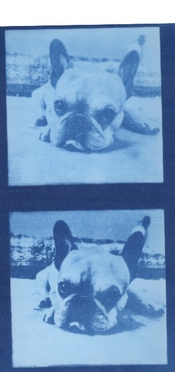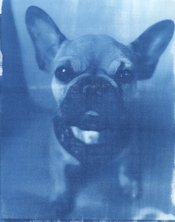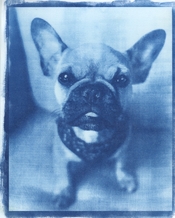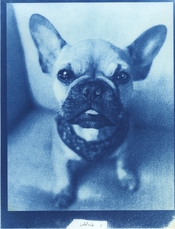Thanks Frank and gbroadbridge for your replies!
I am using this brush with synthetic bristles:
Richeson Synthetic Watercolor Brush Series 9010 Flat Wash 1-1/2"
Richeson Synthetic Watercolor Brush Series 9010 Flat Wash 1-1/2" is a performance minded super strong filament hair brush that withstands harsh painting techniques even on rough surfaces. It offers a quick, and flawless brush response coming to a split-proof, extra fine point or a neat hard...

www.jerrysartarama.com
I did some additional tests yesterday with the Hahnemuhle Platinum Rag paper. First I made a print using the bristle brush on the front side of HPR paper (i.e., if I have the package with the label facing me, and I pull out a sheet from the top of the package, this would be the "label" side)
I then made a print using the bristle brush on the back side of HPR:
Same 6' exposure time under my Quans UV light, same gentle 2'30 water rinse, etc. But a huge difference in tones, especially in the highlights.
I then used a foam brush on the front side of HPR - this time no pre-steam treatment. And I just poured the sensitizer on the paper and worked it in across the paper. These are 7x9 inch prints. I used a total of 5 mL solution ( 2.5mL of A, 2.5 of B).
Same 6' exposure/rinse.
This got me a decent tonal range.
But in all of these, I am seeing lots of coating issues. I see artifacts / white fibers/ streaks.
e.g., white fiber artifacts (foam brush test)
streaks/some white fibers (bristle brush test)
"I'd suggest forget using the colorchecker chart, and just get it working with the standard chart."
-As for this comment. All of these prints were made using the OptLUT color block file applied to the inverted negative image. Mine is H340, S100, B0 (magenta color). This has generally allowed me to make a decent looking print with decent tonal ranges. I have never been able to actually get a good working EDN curve. Part of this may be due to the fact that sometimes I coated on the front of the paper, sometimes on the back, and I'm getting inconsistent results.







